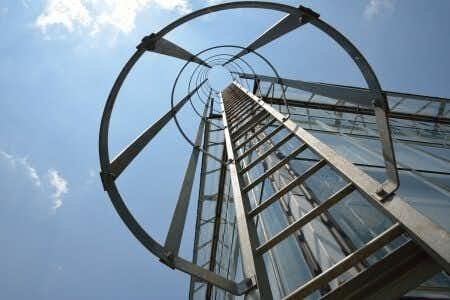Unsafe Ladder Blamed for Fatal Workplace Accident
Updated on
This case involves an individual who was severely injured when he fell off a ship ladder at his place of employment. He worked at a biopharmaceutical company and was responsible for turning off a boiler every night which was located on the roof. To get to the roof, he had to climb a ship ladder, unlatch the roof hatch and climb out onto the roof. It has been determined that that the ladder was about 1 foot from the hatch and did not have 3 points of contact per OSHA requirements. The property owner hired a safety consultant prior to the incident to perform a safety inspection and the ladder was not addressed. We require an expert who can discuss the duty of similar firms to identify hazards and the proper protocols to address these hazards.
Question(s) For Expert Witness
1. Please explain your experience inspecting biopharmaceutical facilities for injury risks.
2. Specifically speaking ship ladders, what are the protocols for when a hazard is identified and how is it to be best addressed?
3. What could have been done to prevent an incident like this from happening?
Expert Witness Response E-083439
 It looks like a metal barrier was added which would make accessing the roof more difficult. Ladder rungs, steps, and cleats should be uniformly spaced when the ladder is in position for use and this ladder is designed to have the mounting bracket at the walking/working surface level at the roof. The metal barrier in the photos provide, indicates that it is not level and the worker would need to step over it. While unlocking and/or opening the hatch the employee may have needed to use both hands which would have prevented the employee from having the required 3 points of contact. If this is the case a new opening or unlocking device could have been added or the employee could have been trained in procedures to open while still maintaining 3 points of contact. Identifying that the metal barrier made accessing the roof more difficult and created a hazard, and then ensuring replacement with the proper ladder and interim mitigation measures could have helped prevent injuries.
It looks like a metal barrier was added which would make accessing the roof more difficult. Ladder rungs, steps, and cleats should be uniformly spaced when the ladder is in position for use and this ladder is designed to have the mounting bracket at the walking/working surface level at the roof. The metal barrier in the photos provide, indicates that it is not level and the worker would need to step over it. While unlocking and/or opening the hatch the employee may have needed to use both hands which would have prevented the employee from having the required 3 points of contact. If this is the case a new opening or unlocking device could have been added or the employee could have been trained in procedures to open while still maintaining 3 points of contact. Identifying that the metal barrier made accessing the roof more difficult and created a hazard, and then ensuring replacement with the proper ladder and interim mitigation measures could have helped prevent injuries.
About the author
Subscribe to our newsletter
Join our newsletter to stay up to date on legal news, insights and product updates from Expert Institute.
Sign up nowFind an expert witness near you
What State is your case in?
Subscribe to our newsletter
Join our newsletter to stay up to date on legal news, insights and product updates from Expert Institute.



